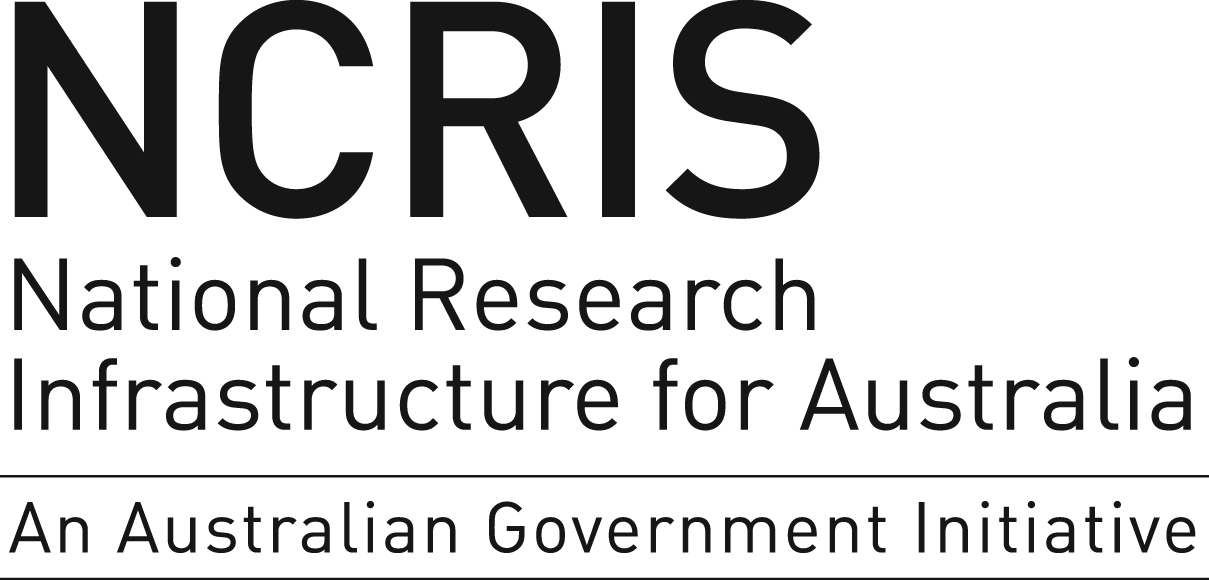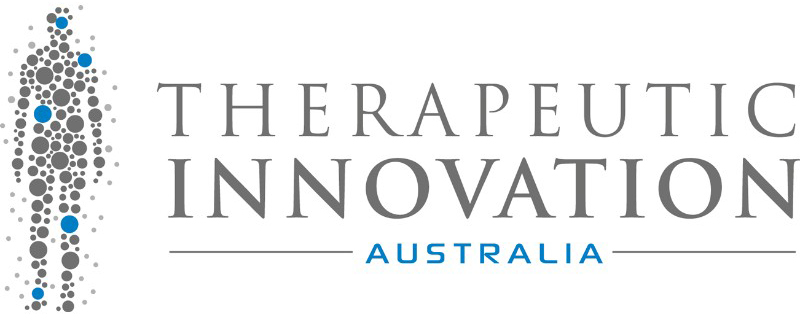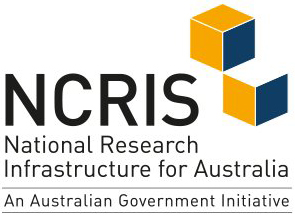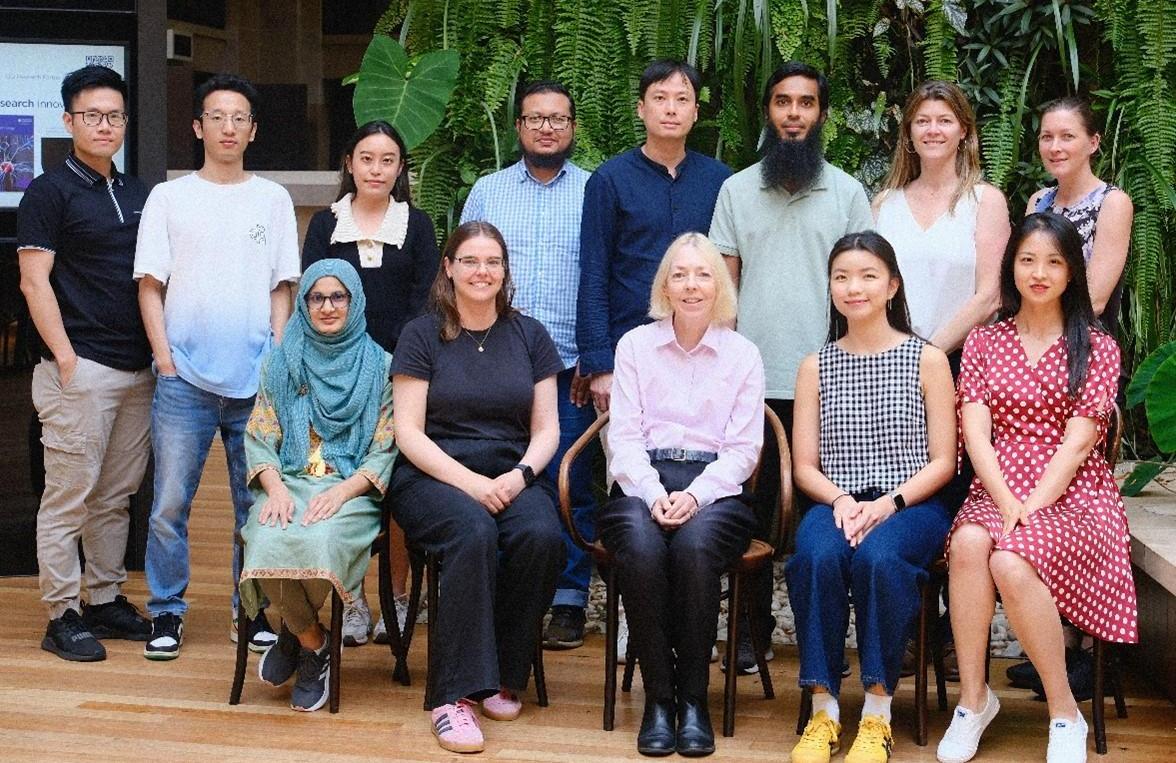Vygonskaya, Marina, Wu, Youzhi, Price, Theodore J., Chen, Zhuo, Smith, Maree T., Klyne, David M., and Han, Felicity Y. (2024). The role and treatment potential of the complement pathway in chronic pain. The Journal of Pain 104689 104689. https://doi.org/10.1016/j.jpain.2024.104689
Kuo, A., Imam, M. Z., Li, R., Lin, L., Raboczyj, A., Bohmer, A. E., Nicholson, J. R., Corradini, L., and Smith, M. T. (2024). J-2156, a small molecule somatostatin type 4 receptor agonist, alleviated hindpaw hypersensitivity in the streptozotocin-induced rat model of painful diabetic neuropathy but with a 2-fold decrease in potency at an advanced stage in the model, mimicking morphine. Frontiers in Pharmacology 15 1346801. https://doi.org/10.3389/fphar.2024.1346801
Kong, Dehui, Fahrenhorst-Jones, Tyler, Kuo, Andy, Simmons, Jacinta L., Tan, Lendl, Burns, Jed M., Pierens, Gregory K., Li, Rui, West, Nicholas P., Boyle, Glen M., Smith, Maree T., Savage, G. Paul, and Williams, Craig M. (2023). seco-1-Azacubane-2-carboxylic acid: derivative scope and comparative biological evaluation. The Journal of Organic Chemistry 89 (1) 798-803. https://doi.org/10.1021/acs.joc.3c02333
Shepherd, Andrew J., Rice, Andrew SC. and Smith, Maree T. (2023). Angiotensin II type 2 receptor signalling as a pain target: Bench, bedside and back-translation. Current Opinion in Pharmacology, 73 102415, 102415. doi: 10.1016/j.coph.2023.102415
Imam, Mohammad Zafar, Ghassabian, Sussan, Kuo, Andy, Cai, Yunxin, Qin, Yajuan, Li, Tingyou and Smith, Maree T. (2023). In Vitro Assessment of the Metabolic Stability of Two Novel Endomorphin-2 Analogs, CYX-5 and CYX-6, in Rat Liver Microsomes. European Journal of Drug Metabolism and Pharmacokinetics, 48 (4), 463-466. doi: 10.1007/s13318-023-00828-6
Chen, Chen and Smith, Maree T. (2023). The NLRP3 inflammasome: role in the pathobiology of chronic pain. Inflammopharmacology, 31 (4), 1589-1603. doi: 10.1007/s10787-023-01235-8
Smith, Maree T., Kong, Dehui, Kuo, Andy, Imam, Mohammad Z. and Williams, Craig M. (2023). Multitargeted opioid ligand discovery as a strategy to retain analgesia and reduce opioid-related adverse effects. Journal of Medicinal Chemistry, 66 (6), 3746-3784. doi: 10.1021/acs.jmedchem.2c01695
Imam, Mohammad Zafar, Kuo, Andy, Ghassabian, Sussan, Cai, Yunxin, Qin, Yajuan, Li, Tingyou and Smith, Maree T. (2023). CYX-5, a G-protein biassed MOP receptor agonist, DOP receptor antagonist and KOP receptor agonist, evokes constipation but not respiratory depression relative to morphine in rats. Pharmacological Reports, 75 (3), 634-646. doi: 10.1007/s43440-023-00446-8
Smith, A. E., Muralidharan, A. and Smith, M. T. (2022). Prostate cancer induced bone pain: pathobiology, current treatments and pain responses from recent clinical trials. Discover Oncology, 13 (1) 108. doi: 10.1007/s12672-022-00569-z
Kong, Dehui, Saqer, Alaa A., Carpinelli de Jesus, Matheus, Khan, Nemat, Jones, Alun, Blanchfield, Joanne T., Smith, Maree T. and Williams, Craig M. (2022). Design, synthesis and evaluation of alpha lipoic acid derivatives to treat multiple sclerosis-associated central neuropathic pain. Bioorganic & Medicinal Chemistry, 69 116889, 116889. doi: 10.1016/j.bmc.2022.116889
Xu, Weizhi, Kumar, Vinod, Cui, Cedric S., Li, Xaria X., Whittaker, Andrew K., Xu, Zhi Ping, Smith, Maree T., Woodruff, Trent M. and Han, Felicity Y (2022). Success in navigating hurdles to oral delivery of a bioactive peptide complement antagonist through use of nanoparticles to increase bioavailability and in vivo efficacy. Advanced Therapeutics 2200109, 2200109. doi: 10.1002/adtp.202200109
Smith, Maree T. (2022). Nonopioid analgesics discovery and the Valley of Death: EMA401 from concept to clinical trial. Pain, Publish Ahead of Print (S1), S15-S28. doi: 10.1097/j.pain.0000000000002675
Han, Felicity Y., Brockman, David A., Nicholson, Janet R., Corradini, Laura and Smith, Maree Therese (2022). Gait analysis as a robust pain behavioural endpoint in the chronic phase of the monoiodoacetate-induced knee joint pain in the rat. Behavioural Pharmacology, 33 (1), 23-31. doi: 10.1097/fbp.0000000000000663
Zhu, Minze, Whittaker, Andrew K., Han, Felicity Y. and Smith, Maree T. (2022). Journey to the market: The evolution of biodegradable drug delivery systems. Applied Sciences, 12 (2) 935. doi: 10.3390/app12020935
Smith, Maree T., Kong, Dehui, Kuo, Andy, Imam, Mohammad Z. and Williams, Craig M. (2022). Analgesic opioid ligand discovery based on nonmorphinan scaffolds derived from natural sources. Journal of Medicinal Chemistry, 65 (3) acs.jmedchem.0c01915, 1612-1661. doi: 10.1021/acs.jmedchem.0c01915
Xu, Weizhi, Maqbool, Faheem, Kumar, Vinod, Falconer, James R., Cui, Cedric S., Woodruff, Trent M., Borges, Karin, Whittaker, Andrew K., Smith, Maree T. and Han, Felicity Y. (2021). Sustained-release ketamine-loaded lipid-particulate system: in vivo assessment in mice. Drug Delivery and Translational Research, 12 (10), 2518-2526. doi: 10.1007/s13346-021-01093-3
Han, Felicity Y., Brockman, David A., Nicholson, Janet R., Corradini, Laura and Smith, Maree T. (2021). Pharmacological characterization of the chronic phase of the monoiodoacetate‐induced rat model of osteoarthritis pain in the knee joint. Clinical and Experimental Pharmacology and Physiology, 48 (11) 1440-1681.13551, 1515-1522. doi: 10.1111/1440-1681.13551
Caudle, Robert M., Smith, Maree Therese and Romero-Sandoval, E. Alfonso (2021). Editorial: verification of animal pain models by reverse translation. Frontiers in Pharmacology, 12 778880, 778880. doi: 10.3389/fphar.2021.778880
Han, Felicity Y., Xu, Weizhi, Kumar, Vinod, Cui, Cedric S., Li, Xaria, Jiang, Xingyu, Woodruff, Trent M., Whittaker, Andrew K. and Smith, Maree T. (2021). Optimisation of a microfluidic method for the delivery of a small peptide. Pharmaceutics, 13 (9) 1505, 1505. doi: 10.3390/pharmaceutics13091505
Kuo, Andy, Corradini, Laura, Nicholson, Janet R. and Smith, Maree T. (2021). Assessment of the anti-allodynic and anti-hyperalgesic efficacy of a glycine transporter 2 inhibitor relative to pregabalin, duloxetine and indomethacin in a rat model of cisplatin-induced peripheral neuropathy. Biomolecules, 11 (7) 940, 1-17. doi: 10.3390/biom11070940
Xu, Weizhi, Zhao, Zonglan, Falconer, James, Whittaker, Andrew K., Popat, Amirali, Smith, Maree T., Kumeria, Tushar and Han, Felicity Y. (2021). Sustained release ketamine-loaded porous silicon-PLGA microparticles prepared by an optimized supercritical CO2 process. Drug Delivery and Translational Research, 12 (3), 676-694. doi: 10.1007/s13346-021-00991-w
Park, Thomas S.W., Khan, Nemat, Kuo, Andy, Nicholson, Janet R., Corradini, Laura and Smith, Maree T. (2021). Characterisation of a rat model of mechanical low back pain at an advanced stage using immunohistochemical methods. Clinical and Experimental Pharmacology and Physiology, 48 (1) 1440-1681.13402, 96-106. doi: 10.1111/1440-1681.13402
Zhu, Minze, Whittaker, Andrew K., Jiang, Xingyu, Tang, Rupei, Li, Xuanyu, Xu, Weizhi, Fu, Changkui, Smith, Maree T. and Han, Felicity Y. (2020). Use of microfluidics to fabricate bioerodable lipid hybrid nanoparticles containing hydromorphone or ketamine for the relief of intractable pain. Pharmaceutical Research, 37 (10) 211, 1-12. doi: 10.1007/s11095-020-02939-0
Agnew-Francis, Kylie A., Tang, Yu Cheng, Lin, Xin, Low, Yu Shang, Wun, Shun Jie, Kuo, Andy, Elias, S. M. A. Sayeed Ibn, Lonhienne, Thierry G., Condon, Nicholas, Pimentel, Bruna Natalia Alves da Silva, Vergani, Carlos, Smith, Maree T., Fraser, James A., Williams, Craig M. and Guddat, Luke W (2020). Herbicides that target acetohydroxyacid synthase are potent inhibitors of the growth of drug resistant Candida auris. ACS infectious diseases, 6 (11) acsinfecdis.0c00229, 2901-2912. doi: 10.1021/acsinfecdis.0c00229
Imam, Mohammad Zafar, Kuo, Andy, Nicholson, Janet R., Corradini, Laura and Smith, Maree T. (2020). Assessment of the anti-allodynic efficacy of a glycine transporter 2 inhibitor relative to pregabalin and duloxetine in a rat model of prostate cancer-induced bone pain. Pharmacological Reports, 72 (5), 1418-1425. doi: 10.1007/s43440-020-00145-8
Kuo, Andy, Lourdesamy, Jacintha, Nicholson, Janet R., Corradini, Laura and Maree, Smith T. (2020). Assessment of the anti‐hyperalgesic efficacy of J‐2156, relative to clinically available analgesic/adjuvant agents in a rat model of mild to moderate chronic mechanical low back pain (LBP). Clinical and Experimental Pharmacology and Physiology, 47 (12) 1440-1681.13383, 1912-1922. doi: 10.1111/1440-1681.13383
Edwards, Stephen R., Khan, Nemat, Coulson, Elizabeth J. and Smith, Maree T. (2020). Comparative studies of glial fibrillary acidic protein and brain‐derived neurotrophic factor expression in two transgenic mouse models of Alzheimer’s disease. Clinical and Experimental Pharmacology and Physiology, 47 (10) 1440-1681.13363, 1740-1750. doi: 10.1111/1440-1681.13363
Han, Felicity Y., Liu, Yun, Kumar, Vinod, Xu, Weizhi, Yang, Guangze, Zhao, Chun-Xia, Woodruff, Trent M., Whittaker, Andrew K. and Smith, Maree T. (2020). Sustained-release ketamine-loaded nanoparticles fabricated by sequential nanoprecipitation. International Journal of Pharmaceutics, 581 119291, 119291. doi: 10.1016/j.ijpharm.2020.119291
Kuo, Andy, Magiera, Julia, Rethwan, Nursyazwani, Andersson, Åsa, Leen Lam, Ai, Wyse, Bruce, Meutermans, Wim, Lewis, Richard and Smith, Maree (2020). In vitro profiling of opioid ligands using the cAMP formation inhibition assay and the β-arrestin2 recruitment assay: No two ligands have the same profile. European Journal of Pharmacology, 872 172947, 172947. doi: 10.1016/j.ejphar.2020.172947
Imam, Mohammad Zafar, Kuo, Andy, Ghassabian, Sussan, Cai, Yunxin, Qin, Yajuan, Li, Tingyou and Smith, Maree T. (2020). Intracerebroventricular administration of CYX-6, a potent μ-opioid receptor agonist, a δ- and κ-opioid receptor antagonist and a biased ligand at μ, δ & κ-opioid receptors, evokes antinociception with minimal constipation and respiratory depression in rats in contrast to morphine. European Journal of Pharmacology, 871 172918, 172918. doi: 10.1016/j.ejphar.2020.172918
Imam, Mohammad Zafar, Kuo, Andy and Smith, Maree T. (2020). Countering opioid-induced respiratory depression by non-opioids that are respiratory stimulants. F1000Research, 9 91, 91. doi: 10.12688/f1000research.21738.1
Shenoy, Priyank A., Kuo, Andy, Leparc, German, Hildebrandt, Tobias, Rust, Werner, Nicholson, Janet R., Corradini, Laura, Vetter, Irina and Smith, Maree T. (2019). Transcriptomic characterisation of the optimised rat model of Walker 256 breast cancer cell-induced bone pain. Clinical and Experimental Pharmacology and Physiology, 46 (12) 1440-1681.13165, 1201-1215. doi: 10.1111/1440-1681.13165
Park, Thomas S.W., Khan, Nemat, Kuo, Andy, Nicholson, Janet R., Corradini, Laura and Smith, Maree T. (2019). J-2156, a somatostatin receptor type 4 agonist, alleviates mechanical hyperalgesia in a rat model of chronic low back pain. Biomedicine and Pharmacotherapy, 117 109056, 109056. doi: 10.1016/j.biopha.2019.109056
Houston, Sevan D., Fahrenhorst-Jones, Tyler, Xing, Hui, Chalmers, Benjamin A., Sykes, Melissa L., Stok, Jeanette E., Farfan Soto, Clementina, Burns, Jed M., Bernhardt, Paul V., De Voss, James J., Boyle, Glen M., Smith, Maree T., Tsanaktsidis, John, Savage, G. Paul, Avery, Vicky M. and Williams, Craig M. (2019). The cubane paradigm in bioactive molecule discovery: further scope, limitations and the cyclooctatetraene complement. Organic and Biomolecular Chemistry, 17 (28), 6790-6798. doi: 10.1039/c9ob01238a
Adiraju, Santosh Kumar Sreevatsav, Shekar, Kiran, Tesar, Peter, Naidoo, Rishendran, Rapchuk, Ivan, Belz, Stephen, Fraser, John F., Smith, Maree T. and Ghassabian, Sussan (2019). Study Protocol for a Pilot, Open-Label, Prospective, and Observational Study to Evaluate the Pharmacokinetics of Drugs Administered to Patients during Extracorporeal Circulation; Potential of In Vivo Cytochrome P450 Phenotyping to Optimise Pharmacotherapy. Methods and Protocols, 2 (2) 38, 38-12. doi: 10.3390/mps2020038
Huang, Lillian, Wyse, Bruce D., Williams, Craig M. and Smith, Maree T. (2019). Nitric oxide modulates μ‐opioid receptor function in vitro. Clinical and Experimental Pharmacology and Physiology, 46 (7) 1440-1681.13091, 676-685. doi: 10.1111/1440-1681.13091
Kuo, Andy, Nicholson, Janet R., Corradini, Laura and Smith, Maree T. (2019). Establishment and characterisation of a stavudine (d4T)-induced rat model of antiretroviral toxic neuropathy (ATN) using behavioural and pharmacological methods. Inflammopharmacology, 27 (2), 387-396. doi: 10.1007/s10787-018-00551-8
Zhu, Minze, Whittaker, Andrew K., Smith, Maree T. and Han, Felicity Y. (2019). Bioerodable ketamine-loaded microparticles fabricated using dissolvable hydrogel template technology. Journal of Pharmaceutical Sciences, 108 (3), 1220-1226. doi: 10.1016/j.xphs.2018.10.029
Xing, Hui, Houston, Sevan D., Chen, Xuejie, Ghassabian, Sussan, Fahrenhorst-Jones, Tyler, Kuo, Andy, Murray, Cody-Ellen P., Conn, Kyna-Anne, Jaeschke, Kara N., Jin, Da-Yun, Pasay, Cielo, Bernhardt, Paul V., Burns, Jed M., Tsanaktsidis, John, Savage, G. Paul, Boyle, Glen M., De Voss, James J., McCarthy, James, Walter, Gimme H., Burne, Thomas H. J., Smith, Maree T., Tie, Jian-Ke and Williams, Craig M. (2019). Cyclooctatetraene: a bioactive cubane paradigm complement. Chemistry: A European Journal, 25 (11), 2729-2734. doi: 10.1002/chem.201806277
Han, Felicity Y., Whittaker, Andrew, Howdle, Steven M., Naylor, Andrew, Shabir-Ahmed, Anjumn and Smith, Maree T. (2019). Sustained-release hydromorphone microparticles produced by supercritical fluid polymer encapsulation. Journal of Pharmaceutical Sciences, 108 (2), 811-814. doi: 10.1016/j.xphs.2018.09.021
Han, Felicity, Whittaker, Andrew, Howdle, Steven, Naylor, Andrew, Shabir-Ahmed, Anjumn, Zhang, Cheng and Smith, Maree (2018). Formulation of bioerodible ketamine microparticles as an analgesic adjuvant treatment produced by supercritical fluid polymer encapsulation. Pharmaceutics, 10 (4) 264, 264. doi: 10.3390/pharmaceutics10040264
Sreevatsav Adiraju, Santosh Kumar, Shekar, Kiran, Fraser, John F., Smith, Maree T. and Ghassabian, Sussan (2018). An improved LC-MS/MS method for simultaneous evaluation of CYP2C9, CYP2C19, CYP2D6 and CYP3A4 activity. Bioanalysis, 10 (19), 1577-1590. doi: 10.4155/bio-2018-0102
Chalmers, Benjamin A., Xing, Hui, Houston, Sevan, Clark, Charlotte, Ghassabian, Sussan, Kuo, Andy, Cao, Benjamin, Reitsma, Andrea, Murray, Cody-Ellen P., Stok, Jeanette E., Boyle, Glen M., Pierce, Carly J., Littler, Stuart W., Winkler, David A., Bernhardt, Paul V., Pasay, Cielo, De Voss, James J., McCarthy, James, Parsons, Peter G., Walter, Gimme H., Smith, Maree T., Cooper, Helen M., Nilsson, Susan K., Tsanaktsidis, John, Savage, G. Paul and Williams, Craig M. (2018). Corrigendum to: Validating Eaton's Hypothesis: Cubane as a Benzene Bioisostere (Angewandte Chemie International Edition, (2016), 55, 11, (3580-3585), 10.1002/anie.201510675). Angewandte Chemie - International Edition, 57 (28), 8359-8359. doi: 10.1002/anie.201711161
Richards, Georgia C., Lluka, Lesley J., Smith, Maree T., Haslam, Catherine, Moore, Brendan, OʼCallaghan, James and Strong, Jenny (2018). Effects of long-term opioid analgesics on cognitive performance and plasma cytokine concentrations in patients with chronic low back pain : a cross-sectional pilot study. PAIN Reports, 3 (4) e669, e669. doi: 10.1097/pr9.0000000000000669
Kuo, Andy and Smith, Maree T. (2018). In vivo profiling of four centrally administered opioids for antinociception, constipation and respiratory depression: between colony differences in Sprague Dawley rats. Clinical and Experimental Pharmacology & Physiology, 45 (10), 1056-1066. doi: 10.1111/1440-1681.12972
Han, Felicity Y., Kuo, Andy, Nicholson, Janet R., Corradinni, Laura and Smith, Maree T. (2018). Comparative analgesic efficacy of pregabalin administered according to either a prevention protocol or an intervention protocol in rats with cisplatin-induced peripheral neuropathy. Clinical and Experimental Pharmacology and Physiology, 45 (10), 1067-1075. doi: 10.1111/1440-1681.12971
Park, Thomas S. W., Kuo, Andy and Smith, Maree T. (2018). Chronic low back pain: a mini-review on pharmacological management and pathophysiological insights from clinical and pre-clinical data. Inflammopharmacology, 26 (4), 1-18. doi: 10.1007/s10787-018-0493-x
Shenoy, Priyank A., Kuo, Andy, Khan, Nemat, Gorham, Louise, Nicholson, Janet, Corradini, Laura, Vetter, Irina and Smith, Maree T. (2018). The somatostatin receptor-4 agonist J-2156 alleviates mechanical hypersensitivity in a rat model of breast cancer induced bone pain. Frontiers in Pharmacology, 9 (MAY) 495, 495. doi: 10.3389/fphar.2018.00495
Moosavi, Seyed Mojtaba, Shekar, Kiran, Fraser, John F., Smith, Maree T. and Ghassabian, Sussan (2018). An improved liquid chromatography tandem mass spectrometry (LC-MS/MS) method for quantification of dexmedetomidine concentrations in samples of human plasma. Journal of Chromatography. B, Analytical Technologies in the Biomedical and Life Sciences, 1073, 118-122. doi: 10.1016/j.jchromb.2017.12.006
Lee, Jia Yu Peppermint, Saez, Natalie J., Cristofori-Armstrong, Ben, Anangi, Raveendra, King, Glenn F., Smith, Maree T. and Rash, Lachlan D. (2018). Inhibition of acid-sensing ion channels by diminazene and APETx2 evoke partial and highly variable antihyperalgesia in a rat model of inflammatory pain. British Journal of Pharmacology, 175 (12), 2204-2218. doi: 10.1111/bph.14089
Qin, Yajuan, Ni, Luofan, Shi, Jiawei, Zhu, Zhiying, Shi, Saijian, Lam, Ai-Leen, Magiera, Julia, Sekar, Sunderajhan, Kuo, Andy, Smith, Maree T. and Li, Tingyou (2018). Synthesis and Biological Evaluation of Fentanyl Analogues Modified at Phenyl Groups with Alkyls. ACS Chemical Neuroscience, 10 (1) acschemneuro.8b00363, 201-208. doi: 10.1021/acschemneuro.8b00363
Imam, Mohammad Zafar, Kuo, Andy, Ghassabian, Sussan and Smith, Maree T. (2017). Progress in understanding mechanisms of opioid-induced gastrointestinal adverse effects and respiratory depression. Neuropharmacology, 131, 238-255. doi: 10.1016/j.neuropharm.2017.12.032
Adiraju, Santosh Kumar Sreevatsav, Shekar, Kiran, Fraser, John F, Smith, Maree T and Ghassabian, Sussan (2017). Effect of cardiopulmonary bypass on cytochrome P450 enzyme activity: implications for pharmacotherapy. Drug metabolism reviews, 50 (2), 1-16. doi: 10.1080/03602532.2017.1417423
Lotfipour, Shahrdad and Smith, Maree T. (2017). Morphine hyposensitivity in STZ-diabetic rats: reversal by dietary L-arginine treatment. Clinical and Experimental Pharmacology & Physiology, 45 (1), 42-49. doi: 10.1111/1440-1681.12855
Nemat Khan, Arjun Muralidharan and Maree T. Smith (2017)
Nemat Khan1, Andy Kuo1, David A. Brockman, Matthew A. Cooper, Maree T. Smith (2017)
- Morphine hyposensitivity in STZ-diabetic rats: reversal by dietary L-arginine treatment
Lotfipour, Shahrdad and Smith, Maree T. (2017)
Arjun Muralidharan1†, Thomas S. W. Park1†, John T. Mackie2, Luiz G. S. Gimenez1, Andy Kuo1, Janet R. Nicholson3, Laura Corradini3 and Maree T. Smith* (2017).
Priyank Shenoy1,2, Andy Kuo1, Irina Vetter3,4 and Maree T. Smith* (2017)
Seyed Mojtaba Moosavi, Kiran Shekar, John Fraser, Maree T. Smith, Sussan Ghassabian (2016). High-throughput assay for quantification of the plasma concentrations of thiopental using automated solid phase extraction (SPE) directly coupled to LC–MS/MS instrumentation. Journal of Chromatography B, http://dx.doi.org/10.1016/j.jchromb.2016.10.038
Shenoy, Priyank A., Kuo, Andy, Vetter, Irina and Smith, Maree T. (2016) The Walker 256 breast cancer cell-induced bone pain model in rats. Frontiers in Pharmacology, 7 AUG: . doi:10.3389/fphar.2016.00286
Han FY, Thurecht KJ, Whittaker AK and Smith MT (2016). Bioerodable PLGA-Based Microparticles for Producing Sustained-Release Drug Formulations and Strategies for Improving Drug Loading. Front. Pharmacol 7:185. doi: 10.3389/fphar.2016.00185
Muralidharan, Arjun, Kuo, Andy, Jacob, Meera, Lourdesamy, Jacintha S., Melo Sores Pinho De Carvalho, Lara, Nicholson, Janet R., Corradini, Laura and Smith, Maree T. (2016) Comparison of burrowing and stimuli-evoked pain behaviors as end-points in rat models of inflammatory pain and peripheral neuropathic pain. Frontiers in Behavioral Neuroscience, 10 88: . doi:10.3389/fnbeh.2016.00088
Pippi, Adam B., Mohd Arshad, Zaira Hidayah, Vol, Ronald J., Nye, Jonathon A., Ghassabian, Sussan, Williams, Craig M., Mancini, Alessandra, Liotta, Dennis C., Smith, Maree T. and Goodman, Mark M. (2016) In Vitro Metabolic Stability and in Vivo Biodistribution of 3‑Methyl-4- furoxancarbaldehyde Using PET Imaging in Rats. ACS Medicinal Chemistry Letters, . doi:10.1021/acsmedchemlett.5b00410
Wong, Chin Lin, Lam, Ai Leen, Smith, Maree T. and Ghassabian, Sussan (2016) Evaluation of a high-throughput peptide reactivity format assay for assessment of the skin sensitization potential of chemicals. Frontiers in Pharmacology, 7 MAR: . doi:10.3389/fphar.2016.00053
Chalmers, Benjamin A., Xing, Hui, Houston, Sevan, Clark, Charlotte, Ghassabian, Sussan, Kuo, Andy, Cao, Benjamin, Reitsma, Andrea, Murray, Cody-Ellen P., Stok, Jeanette E., Boyle, Glen M., Pierce, Carly J., Littler, Stuart W., Winkler, David A., Bernhardt, Paul V., Pasay, Cielo, De Voss, James J., McCarthy, James, Parsons, Peter G., Walter, Gimme H., Smith, Maree T., Cooper, Helen M., Nilsson, Susan K., Tsanaktsidis, John, Savage, G. Paul and Williams, Craig M. (2016) Validating Eaton's hypothesis: cubane as a benzene bioisostere. Angewandte Chemie (International Edition), 55 11: 3580-3585. doi:10.1002/anie.201510675
Smith, Maree T., Anand, Praveen and Rice, Andrew S. C. (2016) Selective small molecule angiotensin II type 2 (AT2) receptor antagonists for neuropathic pain: preclinical and clinical studies. Pain, 157 Supplement 1: S33-S41. doi:10.1097/j.pain.0000000000000369
Smith, Maree (2015) Why different pain-killers are only effective for certain types of pain. The Conversation, .
Ghassabian, Sussan, Griffiths, Lyn and Smith, Maree T (2015) A novel fully validated LC-MS/MS method for quantification of pyridoxal-5'-phosphate concentrations in samples of human whole blood.Journal of Chromatography B: Analytical Technologies in the Biomedical and Life Sciences, 1000 77-83. doi:10.1016/j.jchromb.2015.07.019
Han, Felicity Y., Thurecht, Kristofer J., Lam, Ai-Leen, Whittaker, Andrew K. and Smith, Maree T. (2015) Novel polymeric bioerodable microparticles for prolonged-release intrathecal delivery of analgesic agents for relief of intractable cancer-related pain. Journal of Pharmaceutical Sciences, 1047: 2334-2344. doi:10.1002/jps.24497
Smith, Maree T., Wyse, Bruce D., Edwards, Stephen R., El-Taminy, Mahmoud, Gaetano, Giacinto and Gavin, Paul (2015) Topical application of a novel oxycodone gel formulation (tocopheryl phosphate mixture, TPM) in a rat model of peripheral inflammatory pain produces localized pain relief without significant systemic exposure. Journal of Pharmaceutical Sciences, 104 7: 2388-2396. doi:10.1002/jps.24502
Huang, Lillian Y., Tsui, Debbie Y., Williams, Craig M., Wyse, Bruce D. and Smith, Maree T. (2015) The Furoxan Nitric Oxide Donor, PRG150, Evokes Dose-Dependent Analgesia in a Rat Model of Painful Diabetic Neuropathy (PDN). Clinical and Experimental Pharmacology and Physiology, 42 9: 921-929. doi:10.1111/1440-1681.12442
Alomair, Othman I, Brereton, Ian M, Smith, Maree T, Galloway, Graham J and Kurniawan, Nyoman D (2015) In vivo High Angular Resolution Diffusion-Weighted Imaging of Mouse Brain at 16.4 Tesla. Plos One, 10 6: . doi:10.1371/journal.pone.0130133
Khan, Nemat and Smith, Maree T. (2015) Neurotrophins and neuropathic pain: role in pathobiology.Molecules, 20 6: 10657-10688. doi:10.3390/molecules200610657
Khan, Nemat, Gordon, Richard, Woodruff, Trent M. and Smith, Maree T. (2015) Antiallodynic effects of alpha lipoic acid in an optimized RR-EAE mouse model of MS-neuropathic pain are accompanied by attenuation of upregulated BDNF-TrkB-ERK signalling in the dorsal horn of the spinal cord.Pharmacology Research and Perspectives, 3 3: 1-16. doi:10.1002/prp2.137
Wong, Chin Lin, Ghassabian, Sussan, Smith, Maree T. and Lam, Ai-Leen (2015) In vitro methods for hazard assessment of industrial chemical - opportunities and challenges. Frontiers in Pharmacology, 694: 1-13. doi:10.3389/fphar.2015.00094
Rice, A. S. C. and Smith, M. T. (2015) Angiotensin II Type 2-Receptor: New Clinically Validated Target in the Treatment of Neuropathic Pain. Clinical Pharmacology and Therapeutics, 97 2: 128-130. doi:10.1002/cpt.29
- Significant hindlimb static weight-bearing asymmetry persists for 40-weeks in a longitudinal study in two widely used rat models of surgically induced osteoarthritis knee pain
Kuo, A., Raboczyj, A., Nicholson, J. R., Corradini, L., and Smith, M. T. (2025). Significant hindlimb static weight-bearing asymmetry persists for 40-weeks in a longitudinal study in two widely used rat models of surgically induced osteoarthritis knee pain. Frontiers in Pharmacology 16 1560265 . https://doi.org/10.3389/fphar.2025.1560265.
- Florasulam is a potent inhibitor of Mycobacterium tuberculosis acetohydroxyacid synthase and possesses in vivo antituberculosis activity
Wun, Shun Jie, Tan, Lendl, Lonhienne, Thierry G., Low, Yu Shang, Josh, Peter, Kuo, Andy, Smith, Maree T., Gao, Yanhua, Pierens, Gregory K., Guddat, Luke W., and West, Nicholas P. (2025). Florasulam is a potent inhibitor of Mycobacterium tuberculosis acetohydroxyacid synthase and possesses in vivo antituberculosis activity. ACS Infectious Diseases 11 (5) 1180-1189. https://doi.org/10.1021/acsinfecdis.4c01028.
- The angiotensin II type 2 receptor antagonists, PD123,319 ((S-( +)-1-[(4-(dimethylamino)-3-methylphenyl)methyl]-5-(diphenylacetyl)-4,5,6,7-tetrahydro-1H-imidazo[4,5-c]pyridine-6-carboxylic acid), EMA300 (5-(2,2-diphenylacetyl)-4-[(4-methoxy-3-methylphenyl)methyl]-1,4,6,7-tetrahydroimidazo[4,5-c]pyridine-6-carboxylic acid) and EMA401 ((3S)-5-(benzyloxy)-2-(2,2-diphenylacetyl)-6-methoxy-1,2,3,4-tetrahydroisoquinoline-3-carboxylic acid), evoke pain relief in a varicella zoster virus-induced rat model of neuropathic pain
Das, V., Lam, A. L., and Smith, M. T. (2025). The angiotensin II type 2 receptor antagonists, PD123,319 ((S-( +)-1-[(4-(dimethylamino)-3-methylphenyl)methyl]-5-(diphenylacetyl)-4,5,6,7-tetrahydro-1H-imidazo[4,5-c]pyridine-6-carboxylic acid), EMA300 (5-(2,2-diphenylacetyl)-4-[(4-methoxy-3-methylphenyl)methyl]-1,4,6,7-tetrahydroimidazo[4,5-c]pyridine-6-carboxylic acid) and EMA401 ((3S)-5-(benzyloxy)-2-(2,2-diphenylacetyl)-6-methoxy-1,2,3,4-tetrahydroisoquinoline-3-carboxylic acid), evoke pain relief in a varicella zoster virus-induced rat model of neuropathic pain. Inflammopharmacology 33 (3) 1337-1348. https://doi.org/10.1007/s10787-025-01650-z.
- Evaluation of long-term outcomes with intrathecal opioid treatment: a comparison utilizing data derived from pain clinic populations in Australia and New Zealand
Comber, Elouise Rose, Strong, Jenny, Moore, Orla, Khan, Asaduzzaman, O’Callaghan, James, Manion, Benjamin, Moore, Brendan Joseph, and Smith, Maree Therese (2025). Evaluation of long-term outcomes with intrathecal opioid treatment: a comparison utilizing data derived from pain clinic populations in Australia and New Zealand. Frontiers in Pain Research 6 1527371 1-10. https://doi.org/10.3389/fpain.2025.1527371.
 The mission of the TIA is to provide a facilitated pathway to assist Australian life sciences discovery researchers to progress their inventions through the various nonclinical & clinical development steps to the point where they will attract investment for commercialization into products for improving human health.
The mission of the TIA is to provide a facilitated pathway to assist Australian life sciences discovery researchers to progress their inventions through the various nonclinical & clinical development steps to the point where they will attract investment for commercialization into products for improving human health. The National Collaborative Research Infrastructure Strategy drives research excellence and collaboration between 35,000 researchers, government and industry to deliver practical outcomes.
The National Collaborative Research Infrastructure Strategy drives research excellence and collaboration between 35,000 researchers, government and industry to deliver practical outcomes.![]() The Queensland Drug Discovery Alliance (QDDA) was formed with $2m in Queensland Government Research Infrastructure Co-investment Funding (RICF) in 2024 along with co-investment from TIA, Griffith University, The University of Queensland and UniQuest. QDDA is a collaborative initiative of TIA, Compounds Australia, QEDDI and the CIPDD aimed at supporting the successful advancement of Queensland’s drug discovery innovations to meet unmet health needs.
The Queensland Drug Discovery Alliance (QDDA) was formed with $2m in Queensland Government Research Infrastructure Co-investment Funding (RICF) in 2024 along with co-investment from TIA, Griffith University, The University of Queensland and UniQuest. QDDA is a collaborative initiative of TIA, Compounds Australia, QEDDI and the CIPDD aimed at supporting the successful advancement of Queensland’s drug discovery innovations to meet unmet health needs.


















